#EternalTruth
Explore tagged Tumblr posts
Text

#art#fanart#digital art#my art#:3#:3 nation#cookie run fanart#cookie run#cookie run kingdom#crk fanart#cr kingdom#cookierun kingdom#crk#eternal sugar cookie#eternal sugar crk#eternal sugar fanart#pure vanilla crk#pure vanilla#pure vanilla fanart#pure vanilla cookie#shadow milk cookie#eternal sugar x pure vanilla#eternalvanilla#eternaltruth#puresugar
154 notes
·
View notes
Text
समय सत्य के सिवाय सब चीजों को…

#india#himachal pradesh#sa new himachal#thought of the day#quoteoftheday#Time and truth#symbolic art#EternalTruth#powerOfTime#Truthprevails#TimeErodesLies#PhilosophicalArt#MysticalArtwork#DecayAndHope#TruthVsDeceit#TimeIsEternal#ArtWithMeaning#ThoughtProvokingArt
3 notes
·
View notes
Text
The Essence of Bhakti (Devotion)

Sant Eknath’s doha, “संत जनी की हरि भक्ति, जानहि हरि रूप। भक्ति बिना सुसज्जन, ईश्वर का है मूप।” touches on a profound spiritual truth—the inseparable relationship between devotion and the recognition of the Divine. He suggests that even the wisest among us, without devotion, remain incomplete in their spiritual journey. To truly comprehend the essence of God, we must embrace heartfelt devotion, as it is through this love and surrender that the divine form of Hari (God) reveals itself to us.
Bhakti, or devotion, is not merely about rituals or mechanical worship. It is a deep, personal connection with the Divine that transcends intellect and knowledge. While knowledge, wisdom, and understanding of scriptures are essential, Sant Eknath highlights that these elements alone cannot lead to the complete realization of God. Without bhakti, knowledge is like a vessel without water—it may have structure, but it lacks the essential substance that fulfils its purpose.
True devotion transforms the heart. It moves beyond the confines of the mind and touches the soul. In the company of saints, those who are steeped in devotion, we can see the reflection of the divine. Their actions, thoughts, and words resonate with the energy of the Divine, for their devotion has aligned them with the true form of God. Sant Eknath believes that it is through this alignment that the full experience of God is achieved, which even the wise cannot attain through intellect alone.
Incomplete Without Devotion
Sant Eknath’s message speaks directly to those who believe that wisdom alone can lead to spiritual enlightenment. While wisdom and intellect are crucial, they are incomplete without the emotional and spiritual dimension that devotion brings. Devotion softens the ego, breaks down the barriers of pride, and brings one into a state of humility—a key element in experiencing God. In this state, we no longer see God as an abstract concept but as an intimate, personal reality that touches every aspect of our lives.
Sant Eknath compares the wise without devotion to an empty shell. Wisdom without the heart’s involvement becomes dry, rigid, and disconnected from the true essence of life. The Divine cannot be fully understood by intellectual pursuit alone—it must be felt, experienced, and embraced with love. Bhakti, therefore, completes this journey by opening the soul to the profound presence of God.
Bhakti as the Path to Enlightenment
Spirituality is not about abandoning intellect but about transcending the ego-driven mind through devotion. Bhakti does not negate wisdom; instead, it completes it. The path of devotion integrates love, surrender, and understanding into a holistic approach to God. As one immerses in devotion, the Divine reveals itself not just as an external deity but as the very essence within. This is what the saints, through their constant remembrance and devotion, understand as the form of Hari.
By learning from these saints, we can realize that the intellectual understanding of God must be supplemented by a heartfelt connection. This is not an abstract process; it is deeply personal and transformative.
A Practical Toolkit for Incorporating Bhakti
To incorporate the teachings of this doha into daily life, one needs a simple yet powerful approach:
Daily Devotion Practice: Set aside time each day for personal devotion. This can be in the form of prayer, meditation, or singing praises to God (bhajans). Let this time be a moment of sincere connection with the Divine, free from distractions.
Practice Humility: Ego often blocks the path of spiritual progress. Cultivate humility by serving others selflessly. Recognize the divine presence in everyone and everything around you.
Be in the Company of the Devout: Surround yourself with those who inspire you spiritually. Attend satsangs (spiritual gatherings) where the focus is on devotion and love for the Divine. The energy of a group can elevate your own practice.
Live with Awareness: Bhakti is not limited to set moments of worship; it is a way of living. Carry the awareness of God throughout your daily activities. With each task, remember the Divine and perform your actions as a form of devotion.
Gratitude Journal: At the end of each day, write down moments when you felt connected to the Divine. Reflect on how these moments made you feel and express gratitude for the presence of God in your life.
Chanting and Repetition of the Holy Name: Choose a mantra or name of God that resonates with you and repeat it throughout the day. This keeps your mind connected to the Divine, even during mundane activities.
Study the Lives of Saints: Reading about the lives of saints like Sant Eknath can provide profound inspiration. Their stories remind us of the transformative power of devotion and how it leads to the ultimate realization of God.
Looking Ahead
Sant Eknath’s doha serves as a reminder that without devotion, even the wisest are incomplete in their spiritual understanding. Bhakti, or devotion, is the key that unlocks the heart’s connection to the Divine. Through devotion, we move beyond intellectual understanding and experience God in a deeply personal and transformative way. By incorporating practices like daily devotion, humility, and remembrance of the Divine, we can bring the essence of this teaching into our everyday lives, allowing devotion to illuminate our path to spiritual fulfillment.
#SpiritualAwakening#Bhakti#DivineConnection#InnerPeace#SpiritualJourney#SoulfulLiving#SacredDevotion#Meditation#DivineLove#SpiritualWisdom#EternalTruth#SeekTheDivine#Enlightenment#PathToGod#SacredConnection#AGImage
5 notes
·
View notes
Text
The Timeless Truth of Psalm 119:160
Psalm 119:160 stands as a crucial verse for Christians, serving as a steadfast compass guiding believers toward the unwavering reliability of God's word. It emphasizes the eternal nature of God's righteous judgments, forming the unshakable foundation of their faith and shaping their beliefs, values, and decisions. This verse underscores the unchanging character of God, ensuring that His faithfulness endures through all generations. As Christians internalize the truth of God's word, it becomes a source of strength during adversity, a wellspring of wisdom in decision-making, and a comforting refuge in moments of distress.
The eternal truth encapsulated in Psalm 119:160 holds profound significance for Christians as it establishes the enduring nature of God's word. In a world characterized by constant change, uncertainty, and shifting truths, this verse provides a rock-solid foundation upon which believers can anchor their lives. It assures them that amidst the fluctuations of life, God's word remains an unwavering guide, a timeless source of wisdom, and an unyielding truth to rely on.
Furthermore, the unchanging character of God, highlighted in Psalm 119:160, reinforces the faithfulness of His promises and the constancy of His nature. This assurance cultivates a deep sense of trust and hope within believers, knowing that the God they serve is steadfast and reliable. As they navigate the complexities of life, this unchanging truth offers comfort, peace, and reassurance, serving as an anchor for their souls amidst life's storms.
In a practical sense, Psalm 119:160 influences believers' daily lives, infusing their decision-making processes with divine wisdom. It prompts them to align their values, choices, and actions with the unchanging principles outlined in God's word, leading to a life characterized by righteousness, integrity, and discernment.
For those facing adversity, the eternal truth encapsulated in Psalm 119:160 becomes a source of unwavering strength and resilience. It serves as a reminder that God's word transcends temporal challenges, offering enduring hope and sustenance in difficult times. Similarly, during moments of distress and uncertainty, this verse stands as a beacon of comfort, guiding believers to find solace and peace in the unchanging nature of God's word.
In conclusion, Psalm 119:160 serves as a powerful testament to the unwavering reliability of God's word and its profound impact on believers' lives. As Christians immerse themselves in the eternal truths contained within this verse, they are strengthened, guided, and comforted by the unchanging nature of God's word, which transforms their lives and sustains them through every season.
Psalm 119:160 is the inspiration for today's featured song lyric, which has been adapted into three distinct musical styles.
Christian Rock: https://www.youtube.com/watch?v=_jknSrWCEuU 80's Rock: https://www.youtube.com/watch?v=dIoeC4dsCNU Techno: https://www.youtube.com/watch?v=tWlvIcSW9f8
#Christianity#Faith#GodsWord#Psalm119#BibleVerse#EternalTruth#ChristianLiving#FaithInAction#Encouragement
0 notes
Text
"Transcending Transience: Embracing the Eternal Essence in Raag Asa Mehla 1"

Raag Asa, Mehla 1:
ਜਉ ਤਨੁ ਖਾਕੁ ਹੋਵੈ ਸਭੁ ਸੰਸਾਰੁ ॥ ਤਾਹਿ ਚਿ ਤਾਹਿ ਰਹੈ ਨਿਸੰਕਾਰੁ
॥ Jao tan khaak hovai sabh sansaar || Taahi chi taahi rahai nisaṅkaar ||
When the body becomes dust, the whole world disappears. Then He remains alone, unconcerned.
This verse suggests that while the physical body and world may disappear, the divine essence remains beyond it all.
Prelude:
In the verses of Raag Asa Mehla 1, profound insights into the transient nature of the physical world and the eternal essence of the divine unfold. The composition poignantly illustrates the impermanence of worldly existence and the enduring presence of the divine essence beyond it all. This article delves into the spiritual significance of these concepts, elucidating their relevance in cultivating inner peace and spiritual realization.
Unveiling Raag Asa Mehla 1:
Raag Asa Mehla 1, attributed to Guru Nanak Dev Ji, the founder of Sikhism, is a composition found in the Guru Granth Sahib. Mehla 1 denotes that these verses were composed by Guru Nanak Dev Ji himself, offering timeless guidance to seekers on the path of spiritual enlightenment and liberation.
Interpreting the Verse:
Transience of the Physical Body and World: The verse metaphorically describes the dissolution of the physical body into dust, symbolizing the impermanence of worldly existence. It suggests that when the body disintegrates, the entire world, with all its transient phenomena, ceases to exist.
Eternal Presence of the Divine Essence: Amidst the transience of the physical realm, the verse asserts the enduring presence of the divine essence. It signifies the eternal nature of the divine consciousness, which remains unchanged and unaffected by the fluctuations of the material world.
Understanding the Concept:
Embracing Impermanence: The verse invites individuals to recognize and accept the impermanent nature of worldly existence. By acknowledging the transience of life, one can cultivate detachment from material possessions and ego-driven desires, fostering inner peace and contentment.
Realizing the Eternal Essence: While the physical body and world may disappear, the verse highlights the eternal presence of the divine essence. It encourages seekers to turn their gaze inward, seeking union with the timeless reality beyond the ephemeral manifestations of the material realm.
Cultivating Spiritual Realization:
Practicing Detachment: Engage in practices of detachment and renunciation to transcend attachment to worldly possessions and desires. Cultivate a mindset of non-attachment, recognizing that true fulfillment lies beyond the material realm.
Seeking Divine Union: Dedicate time to spiritual practices such as meditation, prayer, and contemplation to deepen your connection with the divine essence. Surrender to the divine will and immerse yourself in the eternal presence of the divine consciousness.
Wrap-Up:
Raag Asa Mehla 1 offers profound wisdom on transcending the transience of worldly existence and realizing the eternal essence of the divine. By embracing impermanence and seeking union with the timeless reality beyond, individuals can experience profound peace and spiritual fulfillment. Let us heed the timeless teachings of Guru Nanak Dev Ji and embark on a journey of spiritual realization and divine union, guided by the light of eternal truth and transcendence.
#TranscendingTransience#EternalEssence#RaagAsaMehla1#SpiritualWisdom#DivinePresence#InnerPeace#SikhSpirituality#EternalTruth#SpiritualRealization#DivineUnion#TranscendentalWisdom#SpiritualJourney#EnlightenmentPath#SoulfulLiving#TimelessTeachings#SpiritualGrowth#DivineConsciousness#SpiritualAwareness#InnerHarmony#SacredWisdom
0 notes
Text
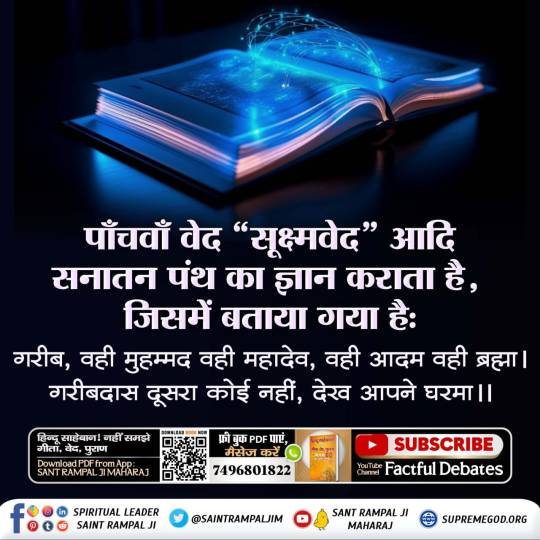
पाँचवाँ वेद "सूक्ष्मवेद" आदि सनातन पंथ का ज्ञान कराता है, जिसमें बताया गया है:
गरीब, वही मुहम्मद वही महादेव, वही आदम वही ब्रह्मा।
गरीबदास दूसरा कोई नहीं, देख आपने घरमा।।
सूक्ष्मवेद का ज्ञान जानने के लिए पढ़िए पुस्तक"हिन्दू साहेबान नहीं समझे गीता,वेद,पुराण"
#पांचवें_वेद_का_रहस्य
#santrampaljiquotes#santrampalji is trueguru#santrampaljimaharaj#across the spiderverse#succession#satlokashram#supreme god kabir#पांचवें वेद का रहस्यvedas ancientwisdom spiritualknowledge indianphilosophy eternaltruths divinescriptures vedicscience vediccultu
2 notes
·
View notes
Text
"A poem is the very image of life expressed in its eternal truth."
- Percy Bysshe Shelley
2 notes
·
View notes
Text

The Word of God is a lamp unto our feet and a light unto our path, guiding us through the darkest valleys and leading us toward truth and righteousness. It is a living and powerful force, sharper than any two-edged sword, penetrating the heart and revealing the depths of the soul. In every verse, we find comfort, wisdom, and the unwavering promises of a faithful God who never abandons His people. From Genesis to Revelation, His words breathe life, restore hope, and remind us that even in the midst of trials, His love endures forever.
0 notes
Text
DO YOU KNOW which Sant currently possesses the knowledge of the fifth Ved, Suksham Ved?
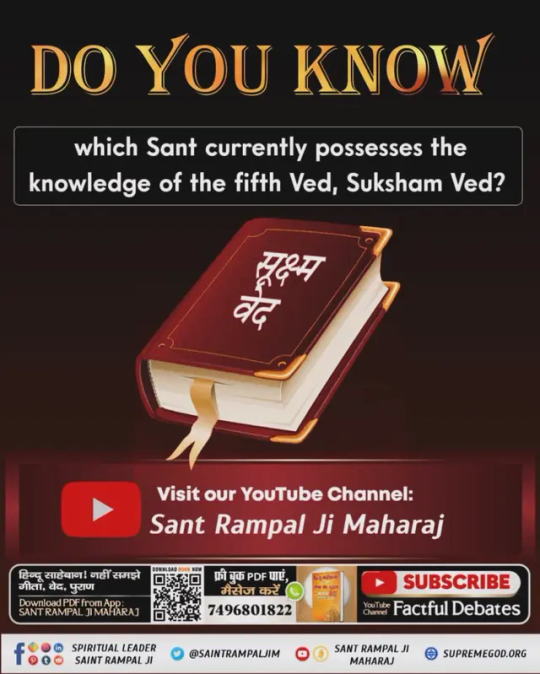
0 notes
Text

they are on a date (IGINORE THE GNOME)
#cr kingdom#cookie run kingdom#cookie run#pure vanilla crk#crk#eternal sugar crk#eternal sugar cookie#pure vanilla#pure vanilla cookie#eternalvanilla#eternalpure#puresugar#eternaltruth#eternal sugar x pure vanilla#pure vanilla x eternal sugar#screenshot#i need eternal sugar's skin plss it matches so much with the one im using on pv and pv is literaly talking abt her IDCCCCC#also they are lesbians or sapphics#i feel like i need to mencion it everytime i talk abt them so ppl know thats how i see them IDK IDK
78 notes
·
View notes
Text
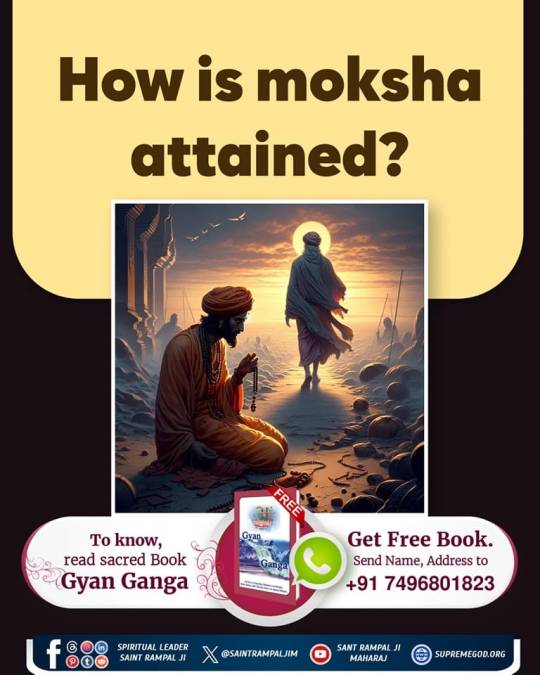
#पांचवें_वेद_का_रहस्य
#Vedas #AncientWisdom #SpiritualKnowledge #IndianPhilosophy #EternalTruths #DivineScriptures #VedicScience #VedicCulture #VedicTradition #HinduDharma #SanatanDharma #RigVeda #YajurVeda #SamaVeda #AtharvaVeda #SacredTexts #VedicMantras #UniversalKnowledge #VedicTeachings #AncientIndia
0 notes
Text
Vasistha’s Bridge: Walking Between Mortality and the Eternal

In the luminous passages of the Rig Veda, Rishi Vasistha emerges not as a preacher, but as a bridge-builder — not of stone or syllables, but of perception. His wisdom teaches that the true human journey is not to escape mortality, but to walk consciously between the mortal and the eternal. This paradox is not to be solved — it is to be lived.
A Bridge is Not a Destination
Vasistha’s hymns remind us that existence is a sacred suspension. We are not fully physical, nor fully divine — we are the tension in-between. The seer understood that the soul’s greatest strength lies not in choosing between earth and ether, but in anchoring one foot in both. Mortality is not a weakness — it is the texture of experience. Eternity is not an escape — it is the rhythm underneath it all.
Unlike the renunciates who discard the world, or the materialists who deny the soul, Vasistha offered a third path: be the bridge. Be the one who remembers the Infinite while folding laundry. Be the one who invokes the stars while stuck in traffic. The divine is not in denial of life — it is its secret scaffolding.
Walking the In-Between
What does it mean to walk this bridge daily? It means cultivating presence like breath — inhaling reality, exhaling transcendence. It is about living in paradox without panic. The eternal does not shout — it whispers through the cracks of ordinary days. The trick is not to avoid the temporary, but to stop worshiping it.
Vasistha's genius was not in proposing abstract philosophies, but in subtly shifting the axis of awareness. He taught that you can eat, weep, earn, fail, grieve, and still — remain vast. To him, life was not a spiritual test — it was a spiritual thread, weaving between flesh and formlessness.
He did not ask us to leave the world to find truth. He asked us to love deeply — knowing it’s temporary. To build, knowing it will fall. To forgive, knowing the wound may remain. This dance is the doorway. This fragility is the freedom.
Vasistha’s Bridge Toolkit: Practical Rituals for the Mortal–Eternal Walk
Bridge Breath (Morning Practice) Sit in silence. Inhale saying “I am mortal.” Exhale saying “I am eternal.” Do this for 9 cycles. This aligns your nervous system with cosmic rhythm.
The Middle-Path Journal Each night, write two things:
One act that made you feel grounded in this world.
One moment that made you feel part of something timeless.
The Pause of Presence Set a reminder 3x daily: “Am I walking as a bridge or falling into one side?” Bring awareness back to the balance.
Sacred Mundane Ritual Choose one daily task (e.g. washing dishes, brushing teeth). Do it with reverence. Imagine it echoes through the cosmos. Anchor the Infinite in the Immediate.
Mortality Memento Keep a natural object (a leaf, a feather, a stone) with you. Each time you touch it, whisper: “I am here now. But I am more than this.” Let it remind you: mortality is the gateway, not the prison.
Final Word
To walk Vasistha’s bridge is not to avoid life or death. It is to become fluent in both languages. You are the thunder between the clouds, the breath between the stars. Don’t chase permanence — embody presence. Let your feet kiss the earth, while your gaze remembers the sky.
Because the bridge is not a place. It’s you.
#VasisthaWisdom#RigVeda#SpiritualJourney#AncientWisdom#EternalTruth#LivingSpiritually#MortalityAndBeyond#ConsciousLiving#VedicPath#SacredBalance#SoulAwakening#DivineHuman#MysticBridge#WalkBetweenWorlds#DailySpiritualPractice
0 notes
Text
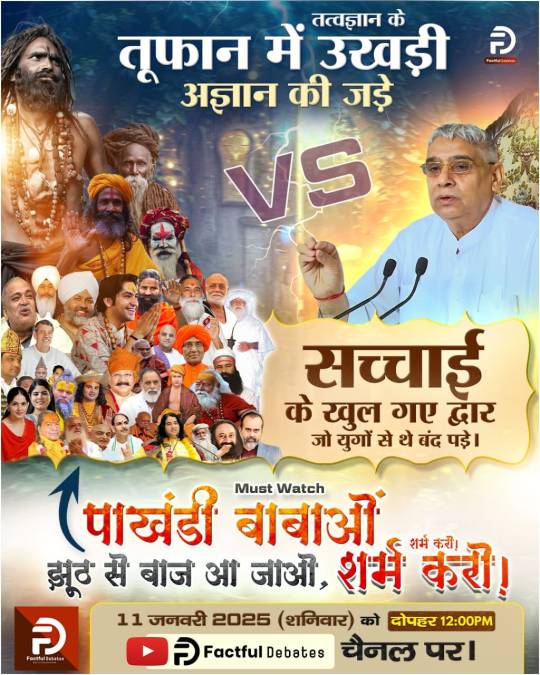
0 notes
Text
Unveiling the Belief System of Sanatana Dharma: A Tapestry of Spirituality and Cosmic Harmony
Introduction:
Sanatana Dharma, often referred to as Hinduism, is more than a religion; it's a way of life that embraces a diverse array of philosophies, beliefs, and practices. In this article, we embark on an exploratory journey through the annals of Hindu scriptures, puranas, vedas, and other texts, to unravel the intricate and profound belief system that forms the foundation of Sanatana Dharma. The Eternal Truth: The term "Sanatana Dharma" translates to "Eternal Truth" or "Eternal Way." At its core, it signifies the timeless principles that govern the universe and human existence. The belief system of Sanatana Dharma revolves around the understanding that there's an underlying cosmic order that sustains and guides all creation. This belief infuses reverence for all forms of life and encourages individuals to align their lives with these eternal principles. Multifaceted Deities and Cosmic Forces: One of the defining features of Sanatana Dharma is its rich pantheon of deities and cosmic forces. From the supreme consciousness of Brahman to the dynamic energies of Shiva, Vishnu, Shakti, and countless other manifestations, these deities embody various facets of existence. These diverse deities reflect the multifaceted nature of the divine and offer a multitude of paths for devotees to connect with the ultimate reality.
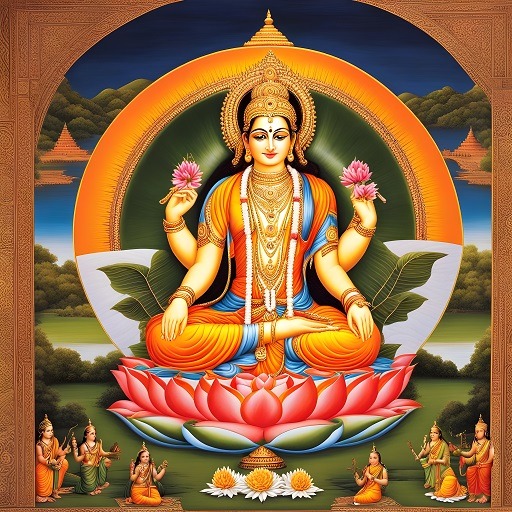
The Concept of Karma and Dharma: Karma and Dharma are pivotal concepts in the belief system of Sanatana Dharma. Karma signifies the law of cause and effect, emphasizing that every action carries consequences. Dharma, on the other hand, refers to righteous duty and ethical responsibility. The belief is that adhering to one's dharma while performing selfless actions leads to spiritual growth and liberation (moksha) from the cycle of birth and death. The Pursuit of Liberation: The ultimate goal of Sanatana Dharma is self-realization and liberation (moksha). The belief system acknowledges that the material world is transient and filled with suffering. The path to liberation involves transcending attachments and delusions to recognize one's true nature as divine. Various spiritual practices, such as meditation, yoga, and selfless service (seva), aid individuals in their journey toward liberation. References Across Scriptures: The belief system of Sanatana Dharma is woven throughout a vast array of scriptures. The Vedas, Upanishads, Bhagavad Gita, and Puranas each contribute to the intricate tapestry of beliefs. The Upanishads delve into the nature of the self (Atman) and its relationship with the ultimate reality (Brahman). The Bhagavad Gita provides a guide to righteous action and spiritual devotion. The Puranas narrate stories of deities and cosmic forces, conveying moral and philosophical lessons. Tantric Insights and Cosmic Energies: Tantra, an integral part of Sanatana Dharma, explores the interplay of cosmic energies and their connection with the individual. Tantric practices involve rituals, visualizations, and mantras to channel divine energies for spiritual growth. The belief is that the material world is not separate from the divine; it's a manifestation of divine energy. Cosmic Unity and Interconnectedness: At the heart of the belief system lies the principle of cosmic unity and interconnectedness. Sanatana Dharma recognizes that all forms of life are interwoven in the fabric of creation. This interconnectedness inspires reverence for nature, animals, and fellow beings. It fosters an attitude of compassion, humility, and respect for the web of life.
Conclusion:
Sanatana Dharma's belief system is a tapestry woven with threads of spirituality, cosmic harmony, and ethical values. It's a philosophy that embraces diversity, honors the eternal truths, and offers a myriad of paths to spiritual realization. The belief in karma, dharma, and liberation guides individuals in their pursuit of self-awareness and unity with the divine. As we delve into the core of this belief system, we uncover a roadmap that transcends time and space, illuminating the path to inner awakening and cosmic alignment. Read the full article
#AdikkaHomePage#CosmicHarmony#DiverseDeities#EternalTruths#HinduBeliefs#KarmaAndDharma#PathToLiberation#SanatanaDharma#SpiritualPhilosophy#TantricInsights#UnityInDiversity
0 notes
Text
"Beyond Wealth: Attaining True Wisdom and Liberation in Raag Majh Mehla 1"
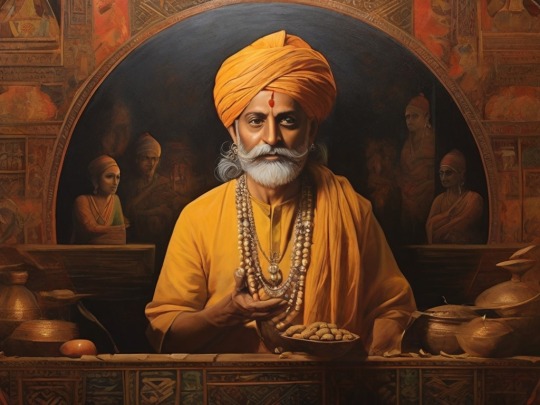
Raag Majh, Mehla 1:
ਵਿੱਤੁ ਪਾਇਐ ਸੋਈ ਸੁਜਾਨੁ ॥ ਜਿਸੁ ਲਗੈ ਨਾਹਿ ਅਨਤ ਅਪਾਰਾਨੁ ॥ Vittu paaeae soi sujaan || Jis lagay naahin ant apaaran ||
He who obtains wisdom is truly wise, and is not attached to the endless and immeasurable world.
Prelude:
In the sacred verses of Raag Majh Mehla 1, profound insights into the nature of wisdom and attachment unfold. The composition extols the virtues of obtaining true wisdom (Sujaan) over material wealth (Vittu), emphasizing the liberation that comes from detachment from the endless and immeasurable world. This article delves into the spiritual significance of these concepts, exploring their profound implications for inner fulfillment and spiritual liberation.
Unveiling Raag Majh Mehla 1:
Raag Majh Mehla 1, a composition found in the Guru Granth Sahib, the holy scripture of Sikhism, is attributed to Guru Nanak Dev Ji, the founder of Sikhism. Mehla 1 denotes that these verses were composed by Guru Nanak Dev Ji himself, offering timeless guidance to seekers on the path of spiritual enlightenment.
Exploring the Concepts:
Vittu (Wealth): Vittu refers to material wealth and possessions. While wealth can provide comfort and security, attachment to it often leads to suffering and bondage. The pursuit of material wealth can distract individuals from the pursuit of spiritual growth and inner fulfillment.
Sujaan (Wisdom): Sujaan signifies true wisdom or spiritual insight. It is the understanding that transcends the material realm and recognizes the impermanent nature of worldly possessions. Obtaining wisdom enables individuals to navigate life with clarity, compassion, and inner peace.
Attachment to the Endless World: The verse highlights the futility of attachment to the endless and immeasurable world. It emphasizes that true liberation lies in transcending attachment to the ever-changing phenomena of the material world and discovering the eternal truth beyond.
Liberation Through Detachment:
By obtaining wisdom and cultivating detachment from material possessions, individuals free themselves from the cycle of suffering and bondage. Detachment does not imply renunciation of wealth or worldly responsibilities but rather a shift in perspective—a recognition that true fulfillment lies beyond the material realm.
Practical Applications:
Cultivating Spiritual Wisdom: Engage in practices such as meditation, self-reflection, and studying sacred texts to cultivate spiritual wisdom. Seek to understand the deeper truths of existence and align actions with spiritual values.
Practicing Detachment: Practice detachment by cultivating gratitude for what you have while reducing attachment to material possessions. Embrace simplicity and focus on experiences that nurture the soul rather than accumulating wealth for its own sake.
Seeking Inner Fulfillment: Shift focus from external achievements to inner fulfillment. Cultivate qualities such as compassion, kindness, and generosity that bring true joy and contentment.
Wrap-Up:
Raag Majh Mehla 1 offers profound wisdom on the nature of attachment and liberation, emphasizing the superiority of obtaining true wisdom over material wealth. By cultivating detachment and seeking inner fulfillment, individuals can transcend the endless pursuit of worldly possessions and discover the eternal truth that brings true liberation. Let us heed the timeless teachings of Guru Nanak Dev Ji and embark on a journey of spiritual growth and liberation, guided by the light of true wisdom and detachment.
#SpiritualWisdom#MaterialDetachment#RaagMajhMehla1#InnerLiberation#TrueWealth#SikhPhilosophy#SpiritualInsight#EternalTruth#TranscendAttachment#InnerFulfillment#DivineWisdom#SpiritualJourney#EnlightenmentPath#MaterialVsSpiritual#SoulLiberation#WisdomJourney#SpiritualGrowth#GuruNanakDevJi#SacredWisdom#DivineGuidance
0 notes
